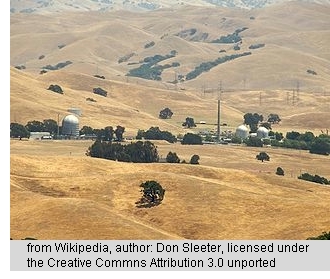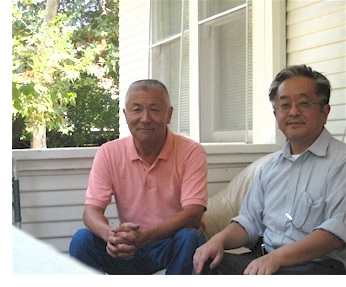



|

|
 |
|
It had almost been 30 years . .I first started with GE Nuclear Energy when I joined GETSCO. The Edison Engineer Program at the time collected each year about 20 young engineers from all over the US, and in 1984, an additional one from Japan to take 6-month job rotations within the company. One of my job assignments involved plant maintenance and not just scheduled maintenance but repair work of equipment that broke in the course of operation. I was lucky to take part in one such work to design remote tooling for a 45-foot underwater repair job. I was already excited for visiting my home country to perform work when we arrived on-site in Japan. It was an old plant and things had taken their beating. All of us went inside the first day to take a look at the work site. The reactor vessel head, dryer and separator had been removed and technicians were already on the work platform. It might have been a surprise to the utility company engineer to meet a Japanese engineer from GE on-site. After some friendly greetings, we went back to our positions and had to wait. After the waiting got a bit too long, I was approached by the utility company engineer obviously frustrated with the wait. “Why isn’t anything happening?” he said. Without knowledge of what was going on, I had to pass the question to the platform, and Kei was one of the guys I had known by that time. I asked, “Kei, our customer wants to know what we are waiting for. What’s going on?” Kei, with a hint of puzzlement replied, “We’re waiting for the paperwork to clear so we can start the work.” “Do we have to wait?” again, without much work experience, I asked. “Yeah!, because our customer said so.” “Who did?” “You did!” Without hesitation, Kei was pointing directly at the customer engineer who started the conversation. I had to work hard to keep any grinning off my face. The engineer quietly walked away. So, to me, Kei was not only a man with great skills in repairing nuclear plants (he had fished out missing tools and parts from the bottom of reactor vessels, and those are 100-foot deep underwater jobs!), he was not afraid of speaking out what was right. I was surprised to learn that the one who blew the whistle about the TEPCO cover-up of the cracks in their facilities was Kei, but it was a pleasant surprise that I knew the guy and when I think of it, it is not so surprising knowing Kei as a person. He follows what he thinks is right. Kei told me when we met this time that when first requested to erase the video of the cracks in the steam dryer, he did as told, but upon returning to the US, from his uneasy feeling consulted with his colleague, a BWR instructor at the training center. The instructor explained to Kei that it would have been a criminal offense if he had done that in the US. From then on, he refused to cooperate in forging or hiding of data. With a GPS on the dash, reaching the address that I was told was easy. I stepped out of the rented Camaro and started walking towards the big yard in front of two houses. A gentleman stood up from the deck and walked towards me. “Kenji?” “Yes, that’s me! Kei.” It had almost been 30 years after we worked for the same company on the same team in Japan. His long wavy hair had turned into gray short hair and the mustache was gone.  Kei started his career in 1973 working at Vallecitos. It is listed by ASME as one of the International Historic Mechanical Engineering Landmarks with a plaque on site that reads: “This facility was the first privately owned and operated nuclear power plant to deliver significant quantities of electricity to a public utility grid.”
Kei started his career in 1973 working at Vallecitos. It is listed by ASME as one of the International Historic Mechanical Engineering Landmarks with a plaque on site that reads: “This facility was the first privately owned and operated nuclear power plant to deliver significant quantities of electricity to a public utility grid.”We talked about our common work colleagues, experience after GE and the wave of events that surrounded Kei after he notified Nuclear and Industrial Safety Agency (NISA) in Japan about the cracks in the steam dryer that TEPCO forced him to cover-up. He wrote the informant letter on June 26, 2000. Later Kei’s mother, who is a Kibei Nisei (born in the US, educated in Japan, and returned to the US), joined us to add pleasant spice to our conversation offering strawberries, watermelons, and crackers with cream cheese. She knew Roy who was my landlord of the Japan-town apartment house I first lived in when I came to the US in 1984. And it turned out that Kei remembered me as a young engineer from Japan that lived in Japan-town and ate dinner at Gombei every night.  After all these years, we have grown. Kei, retired for now, says he would put a nuclear hat back on if the work was in Japan. The Japanese nuclear industry needs guys like him with much hands-on work experience and love towards the country.
After all these years, we have grown. Kei, retired for now, says he would put a nuclear hat back on if the work was in Japan. The Japanese nuclear industry needs guys like him with much hands-on work experience and love towards the country. Many people in Fukushima have been tossed around by the nuclear accident, just like Kei’s mother having to return to Japan from old-time discrimination against her father. Luckily it was before the war and her family was not forced into an internment camp, a shadowed incident in the US war history. Kei’s grandfather, although some Americans were unjust to him, saved a parachuted US pilot from attacks by Japanese farmers. Sometimes “chi” that surround us, whether it is the mood of the people around or dance by the media, clouds our minds about what is right and what is wrong. The chat with Kei’s mother was a pleasant one. Before she walked away to go to the book club she enjoys, she asked what I was doing during the war. I replied that I was still waiting for my mother and father to meet. As our lives go on, we place priorities on different aspects and each person has his way of setting the highest one. Sometimes it is justice, and sometimes it is family members. At other times it could be money or power you can exercise. Our priorities change as we swim through the waves of life. Whatever we do or aim at, that all comes from our desire to live happily, and that is sometimes such a hard thing to accomplish. Kenji Iino
|
|||||||||||||||||||||||||||||||
Copyright©2002-2015 Association for the Study of Failure |